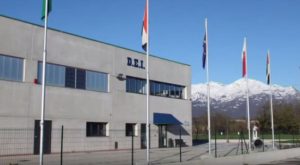Forged valves Vs. cast valves? Not at all: choose according to the use
We often hear or read about a competition between forged valves and cast valves. Nothing could be more wrong and pointless. Each valve has to be chosen according to the function that it has to perfom and to the difficulties that it will bump into, that are: kind of liquid or gas, temperature, pressure of the liquid or the gas that each valve will face.
Forged valves are manufactured by forging –shaping– steel while it is in its solid form. That means that we immediately think about two important benefits: the low quantity of wasted material and the resistance.
Forged valves competitor: a glance over cast valves
Cast valves are valves formed from liquid metal. This process has unquestionable advantages. Casting material allows to:
- create more complex designs, shaps, sizes and patterns
- use different types of metal, if needed
- reduce labor and machining costs
Casting valves give definitely a good cost-effective solution both for manifactures and customers.
The recent emerge of low cost and low quality casting foundries has blemished casting reputation, but we can not forget or underestimate foundries of old and good reputation. And we can not underestimate casting process in valves industry.
Property of forged steel valves
Generally speaking, according to their reputation for being strong, forged valves are mostly used for small bore or high-pressure piping applications. But let us go through the forging process and discover its advantages.
Firstly we can observe that, according to the forming method, forging can be divided into:
- open/free forging: the metal is deformed –divided– between the upper and lower irons (anvil) by using force or pressure and obtaining the required forgings.
- closed forging: The metal is compressed and deformated in a forging die of a certain shape to obtain a forged piece that can be classified as die forging, cold heading, rotary forging and extrusion. Notice that according to the temperature we talk about cold forging (normal temperature), warm forging (below recrystallization temperature), hot forging (processing temperature is higher than recrystallization temperature of billet metal).
Forging materials are mainly carbon steel and various compositions of alloy steel. Secondly we can have aluminum, magnesium, titanium, copper and alloys. The raw state of the forging material is bar, ingot, metal powder and liquid metal.

Advantages of forged steel valves
Forged valves present many advantages for industrial -and mostly oil and gas industry- application.
- Less wasted materials – just the flash after the second pressing on the trimming dies.
- Great strength – therefore forged valves are ideal for high-pressure ora high-temperature systems.
- Less wall thickness – and less chances of thermal fatigue during valve working.
- Uniform dimensional tolerances – as the wall thickness, the uniform dimensional tolerance is a result of the forging process.
It is worth remembering that distributors have to select high competence and high reliability producers. And customers have to select high competence and high reliability distributors and stockist. In the last few years really emerged the problems of valves machined from bar passed off as forged valves
Keep in touch
Please, feel free to check our distributor page in order to che more details of DEI.
DEI is an official Bonney Forge distributor and we have two social network pages: Facebook Official Fan Page and Linkedin profile too.
